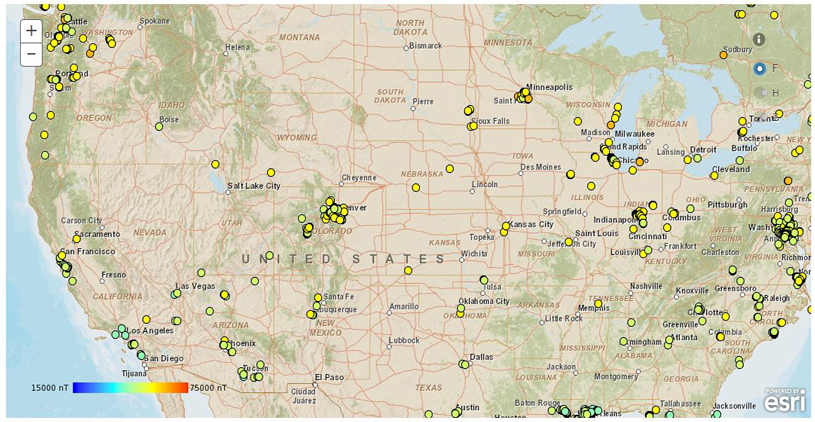The EarthQuiz challenge can take you to virtual field locations with just the click of a button. Where in the world is this, and can you guess the significance of the geological features shown?
apps & software
A Suite of Software Analyzes Data on the Sphere
The software improves data analysis over small portions of a spherical planetary surface. Among other applications, it has helped track Greenland's ice loss over time.
Smartphone App Seeks to Make Navigation Safer
The app sends local magnetic field strength along with your phone’s position and orientation to scientists, who use the data to fine-tune magnetic field models.
Streamlining Field Data Collection with Mobile Apps
With the availability and affordability of new customized apps on smartphones and tablets, data collected in the field are becoming easier to input, store, and share.
Visualization and Analysis Tools for Ultrascale Climate Data
The Ultrascale Visualization Climate Data Analysis Tools (UV-CDAT) software project enables climate researchers to solve current and emerging data analysis and visualization challenges.
Resources for Computational Geophysics Courses
Lessons from experience with teaching a computational geophysics course.
Computer Programing for Geosciences: Teach Your Students How to Make Tools
Learning programming skills can help students excel in their geoscience courses.




